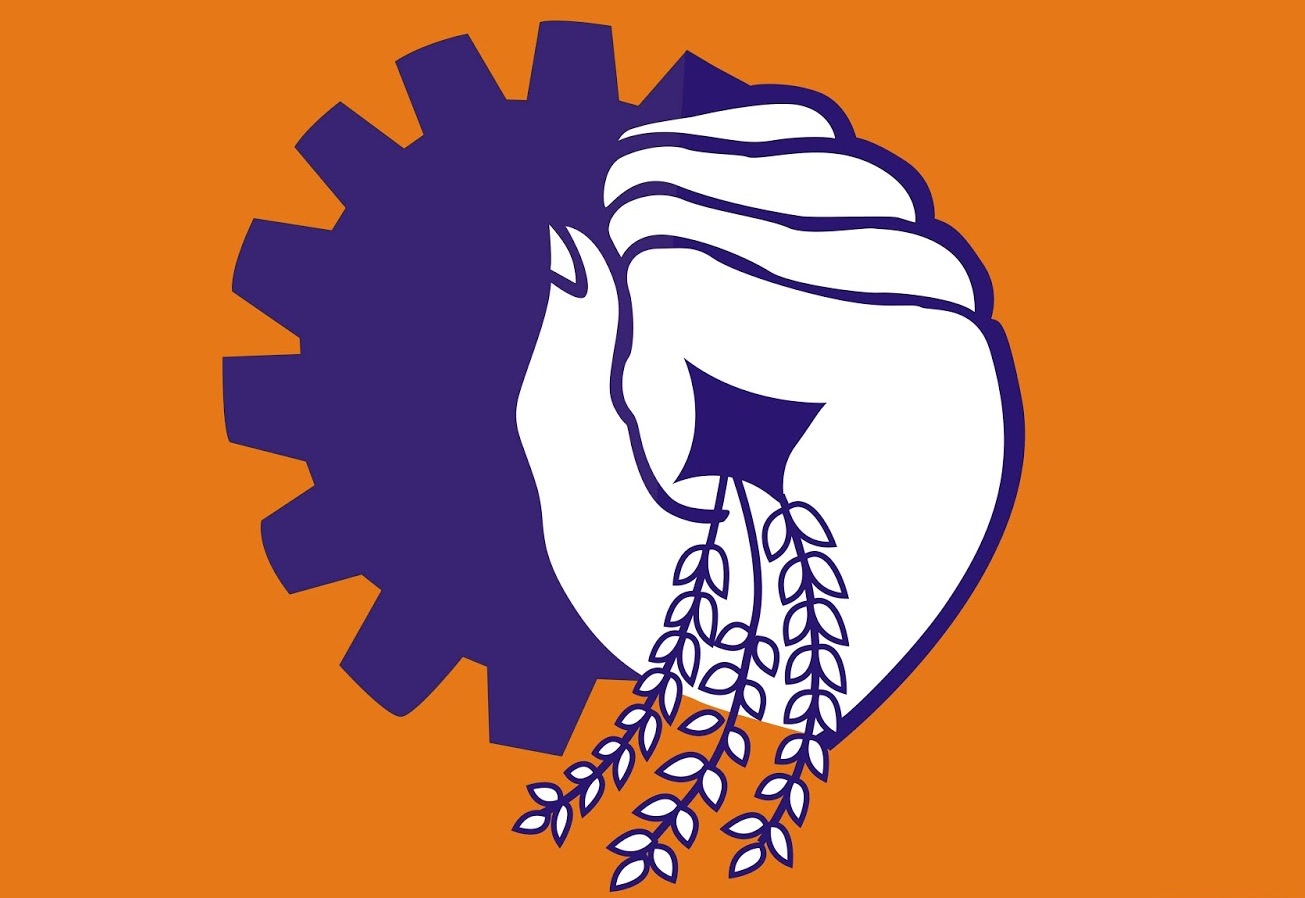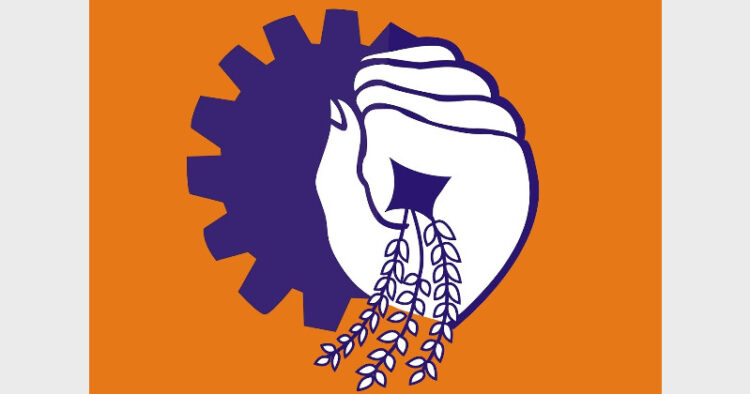Today marks the 63rd foundation day of Bharatiya Mazdoor Sangh (BMS), the world”s largest labour organisation founded by great visionary and nationalist Dattopant Thengadi on July 23, 1955
Since the advent of Globalisation, or to be more accurate, the LPG reforms, lakhs and lakhs of industries were closed, millions of workers were rendered jobless, ban on recruitment in important job sectors was implemented and our growth phenomenon itself was called a “Jobless Growth” Globalisation destroyed the fine fabric of industrial relations. Permanency of job has become an old story and contractualisation is spreading everywhere. In a contract system, both the employer and the worker have no commitment or permanent relations or any attachment with each other. It took about two decades for Indian trade unions to realise the gravity of the situation and the militancy in labour sector has come back now in new shape. Violation of labour laws has led to violence at workplaces. Killings of managers at Manesor Maruti near Capital city of Delhi, Allied Nippon, Precol near Coimbatore, Yanam in Pondicherry state, Assam plantation etc. are examples of such “gory reactions” which was unknown to Indian tradition. In all these places the conventional Central Trade Unions were either weak or absent, and workers reacted to adverse situations in an anarchic way.
Adversarial Approaches
India’s basic labour law is Industrial Disputes Act of 1947. Industrial Disputes Act has laid down a model of employer-employee relations based on the western concept of master servant relationship. Western history had passed through an age of slavery when master-slave relationship existed. Human slaves were sold in open markets like animals. Such a system never existed in Indian history. But on the advent of Industrial Revolution in the west, huge machines were installed in factory premises where hundreds and thousands of workers worked together. Then they started showing united strength and thereafter the “master-slave” relationship was compelled to be refined to become “master-servant” relationship. Master’s right over the life of the slave was replaced with right to “hire and fire” the servant. This is continuing as a default model of the modern Industrial Jurisprudence throughout the world as a part of the Capitalist era. Both the employers and employees rallied on conflicting positions for and against this hire and fire relationship in the field of labour. This is the basic issue posed in industrial relations today.
As a reaction to this exploitative Capitalist model, Communists proposed the class war theory. They divided the national society into two classes. They assumed that capitalists and proletariat are two constantly conflicting classes where employer is worker’s class enemy. Communist parties motivated the working class to fight against their employers with a promise that finally a dictatorship of proletariat will be established. Hence they raised the class slogan: “Workers of the world, Unite!”
The same is true with the Indian Labour jurisprudence. Hence the mutual gains are decided by a process called “Collective Bargaining” where the more powerful party is destined to win. This is based on the principles of “Survival of the fittest”, “Might is right” and “majority democracy” which are fundamental to the Western culture. Government’s role is to act as an umpire in the fight. Thus, the Industrial Disputes Act mandates that disputes are to be settled between the two parties in the presence of the third party viz. Government as a mediator. This is the tripartite mechanism envisaged by labour law. Conciliation proceeding is integral to the dispute resolution mechanism in labour relations.
The Birth of ILO
The so-called October Revolution of the Russian Communists in 1917 sent a signal of fear psychosis among the Capitalist countries of the world. They feared that Communism will spread throughout the world as a fashion among the youths and may over power the capitalist system established in their countries. Hence they thought of wooing the labour across the world by improving their working conditions. For the purpose International Labour Organisation or ILO was established in 1919 under the aegis of League of Nations (the forerunner of United Nations).
The ILO established minimum working conditions for the labour and declared in its Philadelphia conference that “Labour is not a Commodity”. ILO is one medium that prevented the spread of labour unrest and Communism to a major part of the world. India being one of the founder members of ILO, the British Government had to promote formation of AITUC as the first Central Trade Union Federation initiated by Indian National Congress. Many of the Labour legislations in India are a result of international compulsions imposed by ILO.
India was fortunate to have the presence of a great legal luminary such as Dr. Ambedkar as the pioneer in labour reforms. It was started in 1942 when he was appointed as the first Labour Minister in the Viceroy’s council. He had to put his earnest efforts in spite of the staunch non co-operation from the dominating Nehru led faction in the Indian National Congress and in the post Independence Government.
India needs cultural transformation in every field, including labour and industrial relations. In the Capitalist era, commercial culture projects profit as the driving force in everything. Conflict in Capitalism arises when it looks at labour, woman, ecology, land etc. as mere commodities that can be traded. The modern oft used capitalist term “Labour market” is highly objectionable. Vegetable is the commodity in the vegetable market; hence it is ridiculous to treat labour as a commodity in labour market.
Thus the vision of a resurgent India in the labour field is caught in the cob web of Capitalist and Communist ideas of labour relations. What is the alternate that India can give to the world on Labour relations? Let us travel through the vision of labour relations and work culture envisaged by our visionaries.
Indianising the labour Relations
BMS, the only labour organisation rooted in Indian ethos, is opposed to the current adversarial system and wants to move from a regime of conflict to an environment of confluence. There should be a harmonious atmosphere in industrial relations where every issue is settled at the floor level with the employer and workers sitting together and settling. This is bipartism. Only when bipartism fails, tripartism should step in. Government’s role is to protect the good and the weak: “Paritraanaaya Sadhunaam”.
Our labour law reforms should follow such a pursuit where the Government, employer organisations and Trade Unions work hard together to achieve such a confluent environment. Instead of the concept of conflicting parties, BMS has right from its inception, put forward the concept of “Industrial Family”. Hence HR should not be Human “Resources” (still a commercial term); but it should be Human “Relations”. This will promote a work culture where dignity of worker is most respected. ILO has accepted this approach and it has put forward the concept of “Social Partners” giving equal status and role to Trade Unions, employer organisations and Government in labour management. Thus from the thought of three divergent parties (tripartism) we have to move towards the concept of three partners in the process of nation building.
BMS and many reformists have suggested the Government to change the name of the basic law from Industrial Disputes Act to “Industrial Relations” Act. This will convey the beginning of a positive approach to the labour relations in the country. Fortunately the present Government has accepted it and the new draft law has been named as “Labour Code on Industrial Relations”.
Labour in National Spirit
Rigveda is the oldest human literature in the world, marking the dawn of human genius in history. The concept of labour who built the whole world is personified as “Viswakarma” in Rigveda. Rigveda (10.81-82) says Viswakarma is the creator of everything. He is raised to the status of God for the sacrifice he has made for creating the world. For gaining strength of Devas for accomplishing the great work, Viswakarma himself opted to become the havis to be sacrificed in the fire of Sarva Medha Yagnya, says Rigveda (10.81.6)
Rigveda mentions about several great people who were self-model of sacrifice. Just as Viswakarma did, Parampurush, Brihaspati, Dadhichi and Yama have self-sacrificed in various Yajnas for the betterment of the world. Thus, the Indian work culture stands on the footing where both the employer and the employee sacrifice for each other and also for the cause of the nation. Sacrifice is not one way traffic, so is work culture. It is a part of National culture. Bharatiya Mazdoor Sangh has shaped its holistic approach as “Rashtra hita, Udyog hita and Mazdoor hita” ie., welfare of the Nation, Industry and workers. All the three have to progress together. The thought of progress of either one alone at the cost of another does not fit into this paradigm. This is the holistic tripartite culture India proposes.
India strongly needs Nationalist trade unions. Except BMS other trade unions fall under two categories. The communist unions leave no opportunity in siding with the anti national forces. Non-communist unions take neutral stand when National issues are debated. The reason is that such trade unions have to report to their political bosses on policy issues. Very recently the Central Trade Unions from five countries participated in BRICS Trade Union Forum meeting held in China. The meeting was held at a time when India-China ties were shaken. ACFTU, the one and only Chinese Central Trade Union sponsored by the Government, wanted a paragraph to be added to the draft declaration congratulating BRI initiative. It was only BMS representative B. Surendran, National Organising Secretary, who gave written objection to it saying that Indian Government with strong reservations about it did not participate in the Chinese initiative. The representatives of Communist trade unions viz. CITU, AITUC and AICCTU supported the Chinese stand on the Chinese soil. INTUC took a neutral stand. But because of strong objection of BMS representative, the BRICS Trade Union Forum had to drop that paragraph. Trade Unions except BMS did not find anything shameful to play politics outside India; especially on Chinese soil! This is a dangerous trend. Hence the slogan raised by BMS “Nationalise the Labour” assumes importance.
Towards a Resurgent India
In a Capitalist system that is vigorously followed in India, especially in its extreme form of Corporate Capitalism, the Trade Unions are forced to adhere to the rules of game of the present paradigm of competition, fight, show of strength etc. But time will come when the worker, the common man, the farmer, the tribal, the marginalised will decide their own destiny and shape the destiny of the Nation. Let us work for that beautiful time to come.
(The writer is National President, Bharatiya Mazdoor Sangh)













Comments